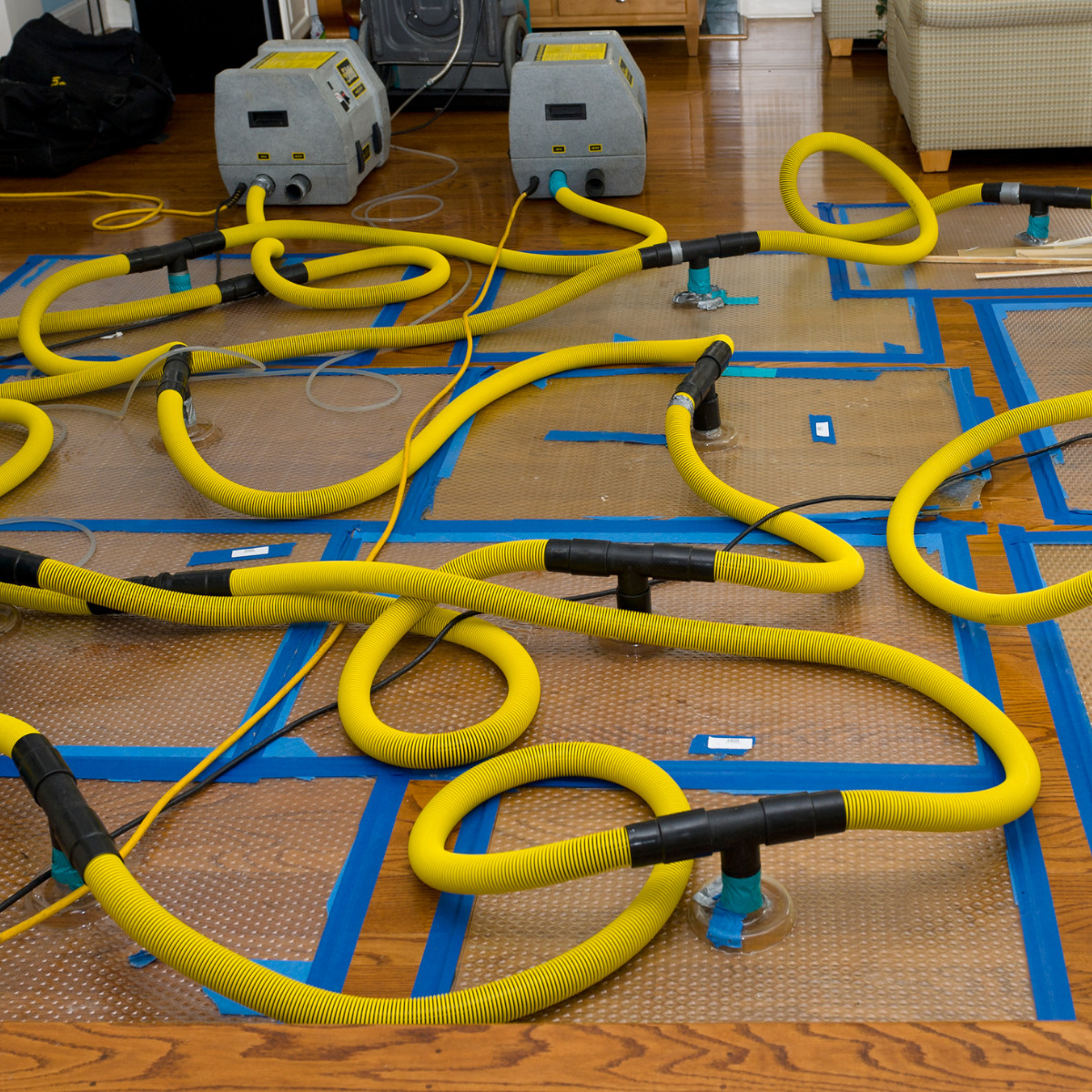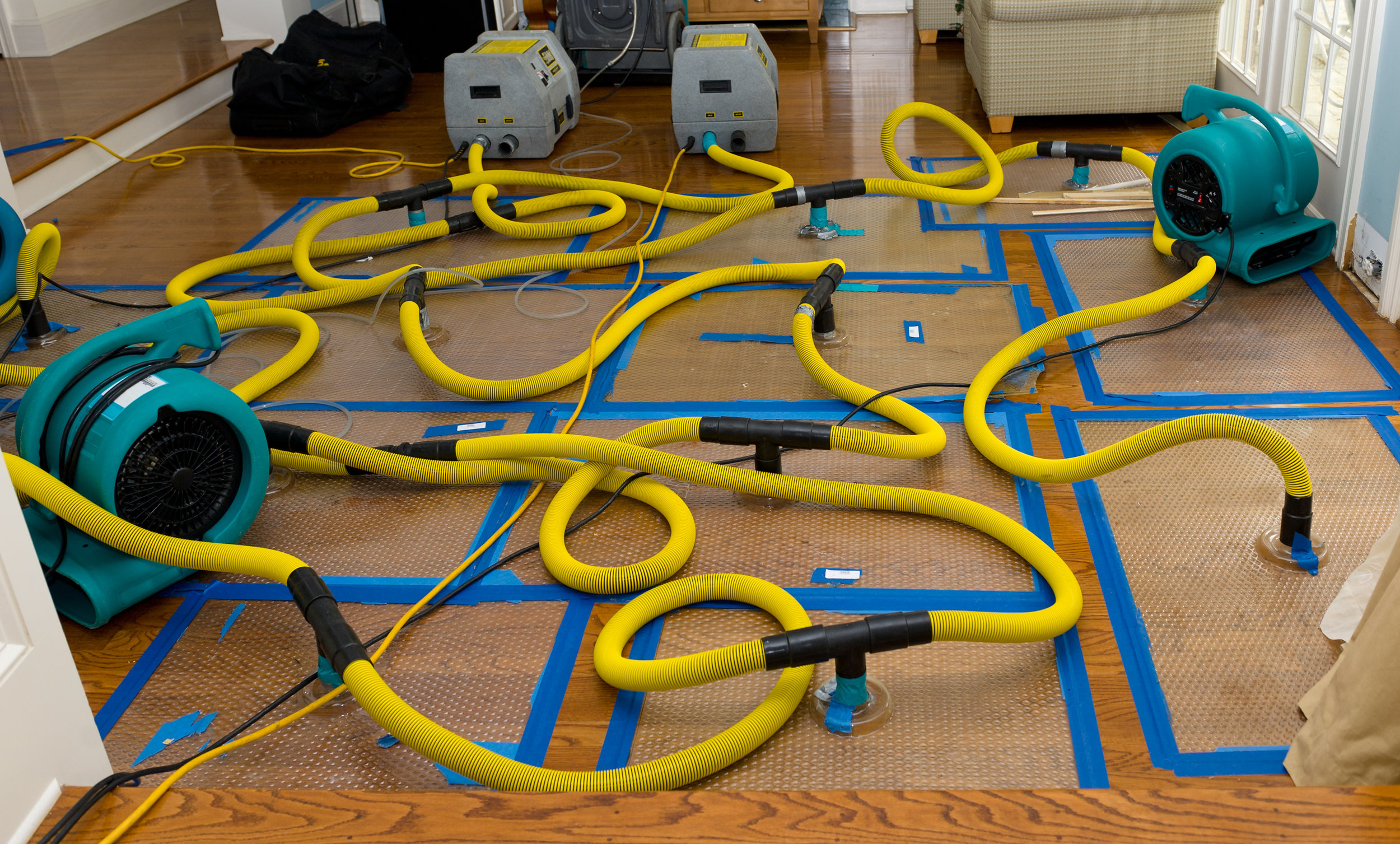Smoke Damage Restoration Tips Every Renter Should Know
Wiki Article
The Full Guide to Navigating the Challenges of Water Damage Restoration
Water damage can strike all of a sudden, leaving you with a daunting mess to tidy up. Understanding the reasons and assessing the degree of the damage is crucial. Your immediate actions can make a considerable distinction in the end result. Yet what actions should you take initially, and how can you ensure you're safeguarded moving ahead? The solutions hinge on a thorough method to restoration that every property owner ought to know.
Recognizing the Sources Of Water Damages
Water damage can strike all of a sudden, typically leaving you clambering to address the after-effects. Recognizing the root causes of water damages is essential for prevention. Water Damage Repair. Usual culprits include dripping roofs, burst pipes, or malfunctioning home appliances. You could also come across concerns with your pipes systems, like clogged drains or sewer back-ups, which can result in considerable water invasion. Weather-related occurrences, such as hefty rainfalls or flooding, can likewise unleash chaos on your home. On top of that, the age of your home plays a function; older frameworks frequently have degrading materials that are more susceptible to leaks and damage. Also small concerns, like condensation from cooling and heating systems, can collect and trigger issues in time. By identifying these prospective sources of water damage, you can take proactive measures to secure your home and lessen future dangers. Staying educated will certainly equip you to acknowledge early indicators and act promptly when issues developExamining the Degree of the Damage
As soon as you have actually determined a prospective water damages issue, evaluating the level of the damage is necessary for establishing the appropriate action. Begin by evaluating the impacted locations completely. Seek visible signs like water discolorations, deformed floorings, or peeling off paint. Do not forget to examine covert places, such as behind walls or under carpetings, where wetness could linger.Next, figured out the sort of water entailed-- clean, grey, or black-- because this impacts the severity of the damage and essential remediation actions. Make use of a wetness meter to measure humidity degrees in walls and floors, helping you determine sticking around dampness that could result in mold and mildew growth.Document everything with pictures and notes, as this details can be important for insurance claims. By properly evaluating the damage, you'll be much better outfitted to select the ideal reconstruction method and protect against further issues down the line.Immediate Tips to Take After Water Damage
After experiencing water damages, the very first point you require to do is assess the circumstance thoroughly. Prioritizing your security is important, so ensure the area is safe before taking any more steps. Don't fail to remember to record whatever completely, as this will certainly be necessary for insurance claims and remediation efforts.Evaluate the Damage
Examining the damages swiftly is necessary for decreasing the influence of water breach. Beginning by inspecting the affected locations to figure out the degree of the water damage - Flood Damage Restoration. Try to find visible signs like drenched carpets, distorted floors, and tarnished wall surfaces. Inspect for covert water, as well, particularly in crawl spaces and behind appliances. Make use of a wetness meter if you have one, as it can assist pinpoint locations that require focus. Document everything with notes and photos; this will certainly serve for insurance cases. Keep in mind to analyze your valuables as well-- furnishings and individual products may need professional cleansing or disposal. By comprehending the extent of the damages, you can make informed choices about the next steps in the reconstruction processFocus On Safety First
Comprehending the level of water damages is simply the start; your safety and security precedes. Prior to you get in a water-damaged area, make certain to shut off the electricity and gas supply to stop any kind of hazards. Use protective gear, including handwear covers and boots, to shield on your own from impurities. Be careful of architectural instability-- ceilings, floors, or wall surfaces may have damaged. If the water is coming from a sewer resource, stay clear of contact and telephone call specialists for aid. Maintain kids and animals away from the affected area. Leave quickly if you scent gas or see electric triggers. Remember, prioritizing your safety assurances you can properly deal with the damage without threat to your wellness. Constantly err on the side of care.Document Whatever Extensively
As you begin addressing water damages, recording every little thing extensively is essential for both insurance policy claims and restoration initiatives. Begin by taking clear photos of the influenced areas, catching the extent of the damage. Make sure to keep in mind the day and time of the incident. Create a checklist of damaged items, consisting of furnishings, appliances, and personal possessions, together with their estimated worths. Videotape any type of activities you take, like contacting specialists or relocating products to avoid more damages. Keep all billings and receipts associated with the restoration process. When filing a case and assist the remediation group recognize the scenario better, this documentation will certainly enhance your case (Flood Damage Restoration). Bear in mind, thorough documents can make a considerable distinction in your healing trip
Mitigating Further Concerns and Avoiding Mold Development
When water damage takes place, acting promptly can substantially reduce the threat of more concerns, especially mold and mildew development. First, remove any kind of standing water making use of pumps or wet vacuums. Next, completely dry out the impacted areas thoroughly. Open up windows, use followers, and think about dehumidifiers to speed up the drying out process. Goal for a moisture level listed below 60% to hinder mold spores from settling.Inspect all products and surface areas affected by water; dispose of anything that can not be appropriately dried, like soaked carpets or drywall. Clean and decontaminate continuing to be surfaces with a combination of water and detergent, or a specialized mold-preventive solution.Keep an eye on the location over the next couple of weeks. If you notice any stuffy smells or staining, address it quickly. Remember, timely activity not just stops mold growth yet also safeguards your residential property and health and wellness.Working With Water Damage Restoration Experts
After taking prompt steps to alleviate water damage and stop mold and mildew growth, it's time to consider specialist help. Water damages repair professionals have the expertise and tools required to take care of comprehensive damages efficiently. When you get to out, prepare to explain the situation thoroughly. This helps them evaluate the intensity of the damages and prepare accordingly.Once they get here, anticipate an extensive evaluation and a thorough strategy for restoration. They'll utilize specific tools to draw out water, dry out impacted locations, and disinfect your room. Do not hesitate to ask inquiries throughout the procedure; recognizing their approaches can reduce your concerns.You needs to likewise review timelines and what to anticipate at each phase of the repair. Working together freely with these experts guarantees you stay informed and entailed, aiding you reclaim your area more efficiently. Trust their competence, and you'll see your home return to its pre-damage condition.Browsing Insurance Policy Cases for Water Damages
Navigating insurance coverage claims for water damages can really feel overwhelming, specifically if you're not familiar with the procedure. First, review your insurance coverage policy to recognize what's covered. Search for specifics on water damage, as not all plans treat it the exact same. Document the damages completely-- take photos and make notes concerning what took place and when.Next, contact your insurance coverage company quickly. Report the damage and provide them with your documentation. They'll assign an adjuster to analyze the circumstance. Be prepared to respond to inquiries and supply extra information as needed.Stay organized throughout the procedure. Keep a document of all communications, consisting of dates, names, and information of conversations. If your claim is rejected or you feel it's inadequate, do not think twice to appeal. Know that determination can repay, so advocate on your own to guarantee you get the coverage you're entitled to.Tips for Future Water Damages Prevention
To keep your home risk-free from water damages, regular maintenance checks are important. Do not forget the value of setting up water discovery systems, as they can alert you to leaks before they end up being significant issues. By staying aggressive, you can conserve yourself time, money, and stress later on.Routine Maintenance Checks
While it may seem tedious, conducting regular maintenance checks can significantly minimize the risk of future water damage in your home. Start by examining your roofing system for missing leaks or shingles; even little concerns can rise promptly. Inspect seamless gutters and downspouts to ensure they're clear and directing water away from your structure. Seek indications of moisture in basements or crawl areas, and attend to any leaks from pipelines or appliances instantly. Bear in mind to examine your sump pump consistently to confirm it's operating correctly. more info Don't forget your cleaning machine hose pipes; replace them every couple of years to avoid burst disasters. By staying positive with these checks, you'll save yourself time, money, and stress and anxiety over time.Set Up Water Detection Systems

Often Asked Concerns
The length of time Does the Water Damages Restoration Refine Generally Take?
The water damage remediation process normally takes anywhere from a couple of days to numerous weeks, depending on the extent of the damages. You'll want to act rapidly to lessen additional concerns and quicken the process.Can I Remain In My Home Throughout the Restoration Process?
You can stay in your home during the reconstruction procedure, yet it depends on the degree of the damages. If it's extreme, it's safer to temporarily relocate up until the job's completed and your home's secure.What Individual Products Can Be Salvaged After Water Damage?
After water damages, you can usually recover items like clothes, books, and electronics, provided they're not soaked or musty. Constantly assess their condition swiftly and consult professionals for recommendations on repair and safety.Are There Any Kind Of Do It Yourself Approaches for Bring Back Water-Damaged Items?
Yes, you can use DIY methods to restore water-damaged items. For furnishings, air-dry and apply a wood conditioner. For fabrics, wash them extensively and air-dry. Always look for mold and mildew before attempting any type of restoration.Just How Can I Determine Hidden Water Damages in My Home?
To recognize concealed water damage, check for water discolorations on wall surfaces and ceilings, listen for leaking audios, really feel for dampness in materials, and check out areas near pipes for indicators of mold or mildew development. As soon as you've recognized a possible water damage problem, reviewing the extent of the damage is vital for determining the appropriate feedback. As you start attending to water damages, recording whatever thoroughly is crucial for both insurance coverage claims and repair efforts. Water damage restoration professionals have the know-how and tools required to handle extensive damages effectively. Installing water discovery systems can be a game-changer for stopping future water damage in your home. The water damage reconstruction process typically takes anywhere from a few days to several weeks, depending on the extent of the damages.Report this wiki page